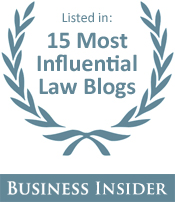Whistleblower Law Blog
Supreme Court Confirms Lower Hurdle for Investor Fraud Suits
The U.S. Supreme Court made it easier for investors to gain class-action status when suing companies for securities fraud, making such lawsuits more likely in the future.
In Amgen v. Connecticut Retirement Plans and Trust Funds, the Court allowed class certification to be granted on a “fraud on the market” theory without any proof that a company made a “material misrepresentation” in its public statements; plaintiffs may merely assert the fraud.
When investors seek damages for securities fraud, they must show that they lost money because they relied on a fraudulent statement. Normally each investor must show individual reliance and harm, which can be difficult and costly. But when a publicly traded company makes a public statement that causes its stock price to drop, all investors may claim reliance on the same statement.
This idea of “fraud on the market” opens the door for class-action suits; companies generally settle such lawsuits before they reach trial.
The Supreme Court didn’t change the legal standard for winning on a claim of securities fraud. Merely allowing such claims to proceed as class actions, however, gives plaintiffs an advantage.
The prospect of more class action suits also may make companies take internal whistleblowers more seriously.
The Court’s decision in Amgen resolved a split among federal circuits: Several circuits had already adopted similar fraud-on-the-market rules, but the Second Circuit had required proof of materiality in order to proceed as a class — and the Third Circuit straddled the issue, giving companies a chance to rebut materiality.
Tagged: Fraud Types, Securities Fraud



